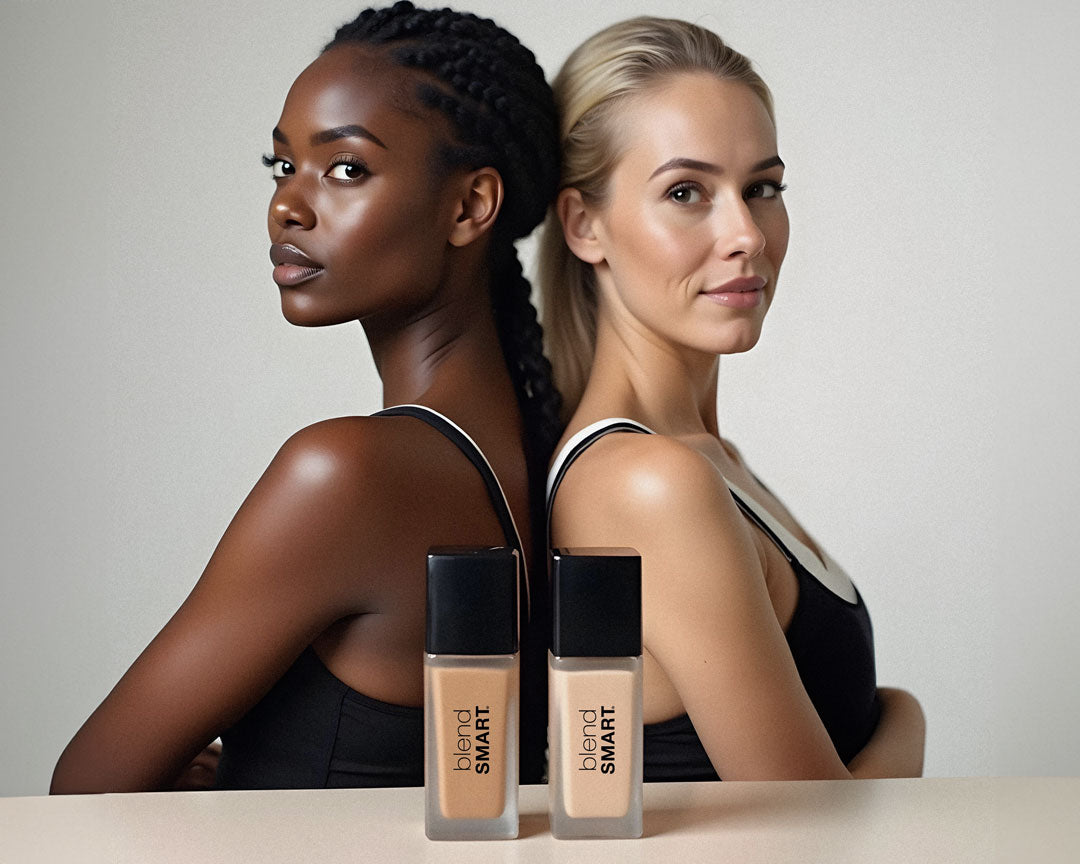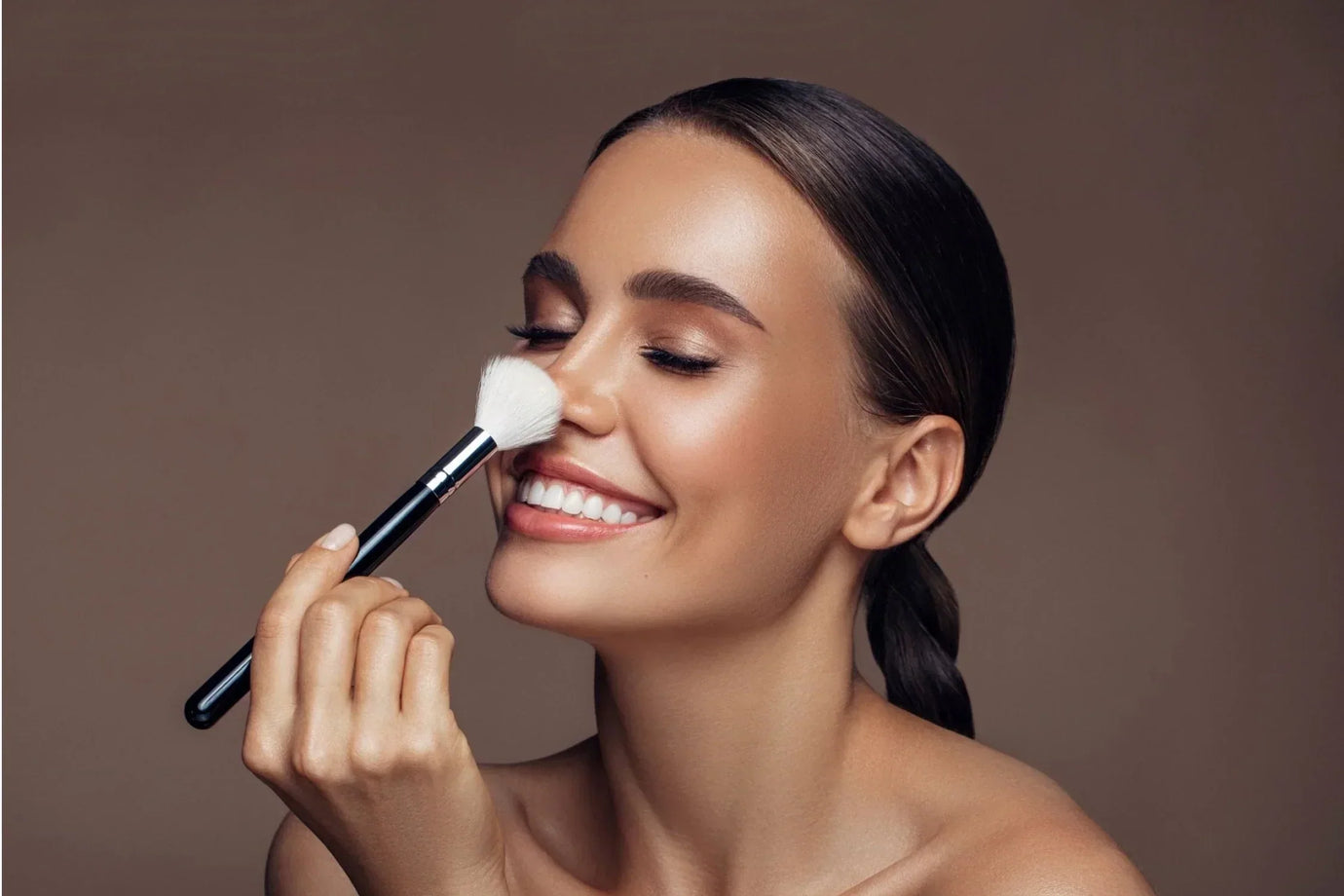Foundation Brush vs Sponge: Which Should You Choose?

Honestly, #TeamSponge vs. #TeamBrush should be the biggest debate since #TeamEdward vs. #TeamJacob. And just like that love triangle, the beauty community has strong opinions and zero chill about it.
Some folks are all about the soft, bouncy glow of a sponge. Others won’t give up their brush for anything: precision, coverage, speed, it’s their ride-or-die. Then there’s you, standing at the mirror wondering which one won’t betray you halfway through your makeup routine.
The truth is, both tools can work wonders if you use the right one for your skin type, foundation formula, and the finish you’re going for. The wrong one? It’s giving patchy, streaky, or full-on foundation flop.
This guide lays it all out: what each tool actually does, when to use which, and how to pick the one that works best for you. Let’s finally settle this (with zero vampire-related drama).
Table of Contents
- Foundation Brushes vs. Sponges: Pros, Cons & When to Use
- Factors to Consider When Choosing Between a Brush and a Sponge
- Foundation Brush vs. Sponge: Side-by-Side Comparison
- Best of Both Worlds?
Foundation Brushes vs. Sponges: Pros, Cons & When to Use Each
This isn’t about which tool is better. It’s about which one fits your routine, your skin, your finish goals and your level of expertise. Both brushes and sponges can look amazing if you’re using them right. So let’s break down what each one really brings to the table.
Foundation Brushes

Pros
- Great for precision and control: Brushes let you apply product exactly where you want it, cheeks, chin, redness, jawline, without accidentally overdoing the rest. You’re basically in the driver’s seat the entire time.
- Give a polished, airbrushed finish: When used correctly, brushes create a super smooth, seamless base. They’re especially good for full glam or when you want everything to stay in place all day.
- Waste less product: Brushes keep the product on top of the bristles, so more of it ends up on your face. Great if you're trying to stretch out that $48 foundation a little longer.
- Work with lots of foundation types: Brushes play well with liquids, creams, sticks, and even powders. You don’t need to switch tools when you switch formulas.
- Easier to clean and dry: Most brushes only need a quick soap-and-water rinse and dry fast. No squeezing, no waiting hours for them to air out.
Cons
- Can leave streaks if you’re not careful: Flat or overly stiff brushes might drag product instead of blending it in, especially if you’re rushing. Technique (or the right brush shape) matters.
- May feel rough on sensitive or dry skin: Not all brushes are created equal. If the bristles are low quality or too densely packed, they can tug or irritate delicate skin.
- Slight learning curve: If you’ve only ever used sponges, learning to blend with a brush might feel a little awkward at first, especially when working around the nose or hairline.
- Quality brushes can get pricey: Cheap brushes often don’t blend well, shed bristles, or feel scratchy. Investing in a good one makes a huge difference, but the upfront cost can sting a little, especially if you’re building a whole kit.
Best for
- Medium to full coverage looks
- More defined or sculpted makeup styles
- Quick morning routines if you're using a high-performance brush
- Anyone who wants a long-lasting, perfected finish without fuss
Special Brushes
Everything above applies to most brushes, but a few are built to change the game entirely.
Some newer designs include a rotating mechanism that blends the product for you, giving you all the things we love about brushes (precision, coverage, speed), without the stuff that usually gets in the way (like streaks, tugging, or a steep learning curve).
These rotating brushes are especially useful if you have sensitive or textured skin, or just want that flawless finish without having to buff like a pro. If brushes have ever felt a little too tricky or time-consuming, this is the kind of upgrade worth looking into.
Makeup Sponges

Pros
- Beginner-friendly and super forgiving: Sponges are basically impossible to mess up. Just bounce and blend. The tapping motion diffuses harsh edges and smooths everything out without much effort.
- Gives a soft, natural finish: Because they press product into the skin instead of layering it on top, sponges leave a fresh, dewy look. Perfect for skin tints, tinted moisturizers, and that “I just glow like this” vibe.
- Zero streaks: Since there are no bristles involved, you never have to worry about drag marks or uneven application.
- Multi-purpose magic: Sponges aren’t just for foundation. They’re great for blending out concealer, cream blush, highlighter, or even toning down a contour that went a little too hard.
Cons
- Suck up a lot of product: Sponges are thirsty. Even damp ones absorb a good amount of foundation, meaning you’ll go through the product faster. It adds up over time.
- High-maintenance hygiene: You really do need to wash them after every use, ideally with warm water and soap, and let them dry completely. Otherwise, it’s a bacteria playground.
- Slower to build coverage: Getting from sheer to full coverage with a sponge takes longer and usually requires more product. It’s more layering, more time, more taps.
- Not great for detail work: They’re soft and squishy, which is great for big areas, but not so great for getting into tight corners or creating sharp edges.
Best for
- No-makeup makeup or sheer coverage days
- Sensitive skin that doesn’t love bristles
- People who like that soft, hydrated, glowing finish
- Slower, more intentional routines (where blending is basically a meditation)
Factors to Consider When Choosing Between a Brush and a Sponge
Still undecided? Can’t blame you, both tools have their moments.
The key is knowing what you need from your foundation routine. Here are the main factors to think through before picking a side (or keeping both in your kit).
Desired Finish and Coverage
If you want full glam, built-up coverage, or that smooth, photo-ready finish, a brush is usually the better bet, especially one that buffs and blends as it goes. It gives you more control over how much product goes where, and helps create that flawless canvas.
But if you're going for a skin-like, dewy look with lighter coverage, a sponge is your best friend. It presses product into the skin and leaves a softer, more diffused finish. Great for daytime makeup, skin tints, or “just enough to look alive” days.
Skin Type and Concerns
Got dry or sensitive skin? A sponge might feel gentler, especially when damp. The bouncing motion is softer than buffing, and it won’t catch on dry patches as easily.
But brushes have their perks too, especially if you use one designed to glide smoothly without tugging. The rotating ones specifically are especially great for textured or mature skin, since they blend without putting pressure on delicate areas.
Foundation Formula
Not all tools play well with all formulas. Brushes tend to work better with thicker, creamier foundations, sticks, and full-coverage liquids. You’ll get more payoff with less effort, and it won’t thin the formula out.
Sponges pair best with lightweight or hydrating foundations, anything with a serum-y or watery base. Just remember: they soak up a lot, so you might go through the product faster.
Maintenance and Hygiene
If you’re not the type to wash your tools daily (or even weekly.. no judgment), brushes might be the more realistic option. A quick clean every few days goes a long way, and they dry pretty fast.
Sponges, though? They’re high-maintenance. They need to be washed after every use and fully dried, otherwise you risk breakouts or worse, mold. If hygiene isn’t your strong suit, you’ve been warned.
Time and Routine Fit
Have five minutes and zero patience? A brush is usually faster, even more once you get used to it. The rotating brushes even do the blending work for you, making them perfect for rushed mornings or on-the-go touch ups.
If you’ve got time to spare and love the meditative rhythm of bounce, blend, bounce… sponges totally work. But just know: it’s more effort for less coverage, so factor that into your decision.
Budget
Brushes range from drugstore steals to splurge-worthy tools. The good news? A high-quality brush can last years if you care for it. Some even come with replaceable heads, so you're not buying a new one every few months.
Sponges, while cheaper upfront, need to be replaced more often, especially if you're using them daily. Over time, that $8 sponge habit adds up.
Foundation Brush vs. Sponge: Side-by-Side Comparison

Best of Both Worlds?
Every once in a while, a makeup tool comes along that quietly changes everything — and suddenly everyone who’s tried it won’t stop talking about it.
Rotating foundation brushes are one of those things.
They take what brushes do best — precision, coverage, structure — and combine it with the effortless blending people love in a sponge. But the twist? They actually spin as you apply, diffusing foundation in smooth, even layers without needing pro-level wrist work.
One brand that’s completely nailed this concept is blendSMART with its Starter Brush Kit, #1 motorized makeup brush on the market. It’s the brush most people try when they want something better than traditional tools, and for a lot of them, it’s the one they stick with.

Instead of buffing by hand, the brush head rotates as you glide it over your skin, blending foundation more evenly and with less effort. It’s gentle, consistent, and surprisingly fast. No streaks, no patchiness.
And the best part? You don’t need to learn a new technique. You don’t need to bounce or swirl or hope your brush plays nice with your foundation. The rotating brush does the blending for you, so you just click it on and go.
It’s especially helpful if:
- You have dry, textured, or mature skin that doesn’t respond well to traditional buffing
- You want full, even coverage but hate wasting product
- You’ve never quite gotten the hang of brush blending
- Or you just want to get out the door faster without sacrificing your base
It’s the kind of tool that quietly upgrades your entire routine, and once it clicks (literally), it’s hard to imagine going back.
Conclusion
At the end of the day, there’s no one “right” tool. Only the one that works best for you.
If you’re all about a quick, sculpted, full-coverage routine, a brush will probably fit right in. If you prefer something soft, natural, and super forgiving, sponges totally deliver. And if you’ve ever wished you could have the best parts of both, the precision of a brush with the ease of a sponge, a rotating foundation brush might just be your perfect in-between.
The good news?
You don’t have to commit to just one. Many makeup lovers keep both on hand and switch depending on the day, the product, or the finish they’re going for.
But if you’re ready to simplify your routine, save some time, money, and finally get that flawless blend without overthinking it, it might be time to try something smarter: blendSMART Full Artistry 8-Piece Set.
The ball is in your court!


![Best Foundations for Dry Skin [10 Top Picks + Pro Tips]](http://blendsmart.com/cdn/shop/articles/Untitled_design_2.jpg?v=1754050507&width=1380)
